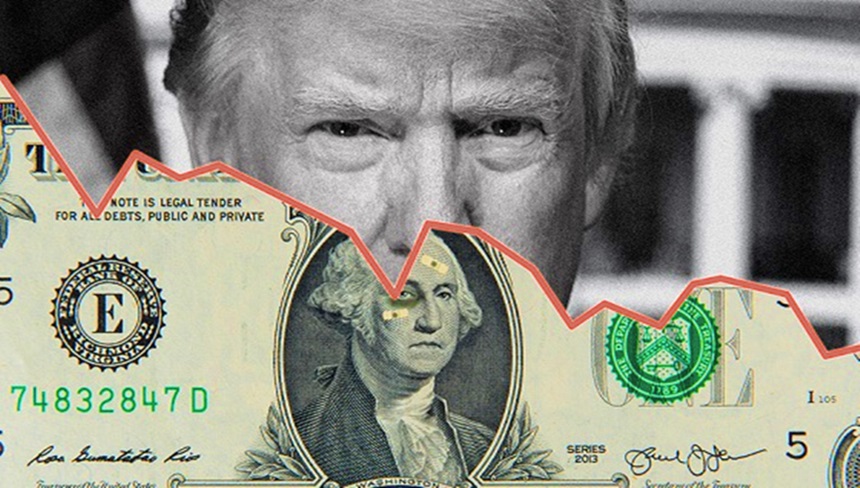Sat 10 August 2019:
The trade war between Washington and Beijing took an unexpected turn this week as China let its currency drop sharply and the United States responded by officially designating the country a currency manipulator.
The confrontation underscored the Trump administration’s focus on weakness in foreign currencies — and the corresponding strength of the dollar — as a drag on the American economy.
“It’s a big deal because I think it would mark a new sort of phase in how the US approaches the international economy,” said Michael Feroli, chief United States economist with JPMorgan Chase.
Why would the US benefit from a weaker dollar?
A weaker currency makes a country’s exports cheaper for buyers overseas, giving a country a competitive advantage. For years, an artificially weak renminbi underpinned China’s growth as a manufacturing base for the rest of the world.
The Trump administration’s tariffs on imports of Chinese-made goods are meant to raise the price of those products once they land in the United States, discouraging Americans from buying them.
But one way for China to respond is to weaken the renminbi and undermine the impact of those tariffs by making those products cheaper.
That’s why when China allowed its closely controlled renminbi to depreciate sharply against the dollar on Monday, it was taken as a sign that the trade war between the United States and China was getting worse.
The currency has since strengthened, easing this tension somewhat, but China isn’t the only trading partner the president has a problem with.
For instance, in June, after the European Central Bank said it might restart stimulus programs to bolster the economy, Mr. Trump accused it of pushing down the value of the euro, “making it unfairly easier for them to compete against the USA.”
“They have been getting away with this for years, along with China and others,” he said on Twitter.
A weaker dollar has other benefits. For instance, it could also bolster corporate earnings. Roughly 40 percent of the revenue of the biggest American companies now comes from overseas, and a weaker dollar means those foreign sales make a bigger contribution to the bottom line. Those higher earnings can help give the stock market a lift.
None of this is a secret. But in the past, governments have shied away from weakening their currencies, in part because they were afraid it would also lead to an ugly bout of inflation, which was traditionally viewed as the big risk of a weak currency. These days, inflation around the world is incredibly low and shows little sign of rising.
“You have almost the perfect macro backdrop for policymakers to encourage currency weakness,” said Alan Ruskin, chief international strategist at Deutsche Bank in New York.
So whether China is deliberately lowering the value of the renminbi, or the euro is tumbling because currency traders are worried about the region’s growth, the ultimate impact is that the dollar is stronger.
Strong currencies tend to weaken a country’s exports and bolster the consumption of foreign products. That can lead to larger trade deficits.
President Trump has made reducing the trade deficit with China a crucial focus of his administration and a crucial goal of the tariff war that began in 2018.
But that effort has had mixed results. The United States’ goods deficit with China initially widened to a record $43 billion in October before shrinking significantly since then. It is now hovering around $30 billion a month.
In theory, if the dollar weakened against the Chinese currency, it could do more to cut that trade deficit than a tariff battle, potentially offering the president a chance for a political victory going into the 2020 election.
If other countries can weaken their currency, why doesn’t the United States do the same?
In theory, it can. But in practice it isn’t easy.
In part, that’s just because the currency markets are so big. Every day, more than $5 trillion changes hands in those markets, and more than $4 trillion of those trades involve the dollar.
China controls the renminbi because it can use the bottomless buying power of its central bank, which publishes an official price for the currency every day around which it allows a certain amount of trading.
The People’s Bank of China has the ability to print renminbi to weaken the currency if the exchange rate gets too high. On the flip side, Beijing has $3 trillion in reserves it can deploy to keep the currency from getting too weak.
Right now, the United States doesn’t operate that way.
It has some capacity to intervene in financial markets by using the Exchange Stabilization Fund, a vehicle under the control of the Treasury secretary, with about $100 billion of buying power.
“Unless Congress gives Treasury authority to beef up the Exchange Stabilization Fund, it just doesn’t have enough firepower,” said Joseph Gagnon, senior fellow at the Peterson Institute for International Economics.
Last month, Larry Kudlow, director of the National Economic Council, said the White House had considered an intervention to weaken the dollar before deciding against it. The same day, however, Mr. Trump contradicted Mr. Kudlow, telling reporters that all options were on the table.
“I could do that in two seconds if I wanted,” Mr. Trump said. “I didn’t say that I’m not going to do something.”
So in the past, when American politicians wanted to change the value of the dollar, they had to coordinate efforts involving a number of countries. That’s what happened in 1985, when the United States engineered an agreement to weaken the dollar as part of an agreement known as the Plaza Accord.
Of course, those countries were all strategic allies of the United States. Persuading China to let its currency strengthen to help the United States is a different situation all together.
-Source: Asharq al Awsat
Think your friends would be interested? Share this story!





